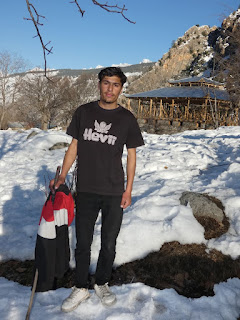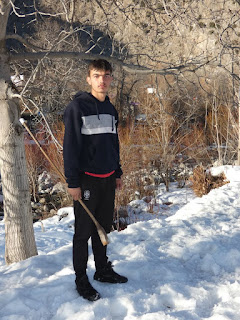Gos’ nik . Coming of Age Ceremony. December 19, 2024
On this day, customs are held that
gradually lead children into the world of adults. Their general name is Gos’ nik.
Gos’ is the pen and nik the verb to transport, move animals. It is called so
because the mother's brother transports animals from his pen and leads them to
the pen of his son-in-law, as an offering to his nephews. Before the Gos’nik
ceremonies, the head of the family makes offerings of flour on the altar of the
settlement and on the roof or threshold of his house. The main events of Gos’nik
day are:
-The "Gos’nik Piran" for boys who are four or five years old and are able to dress themselves and wear the "piran", a woven tunic for men. On top of his colorful hat they attach a crest of goat's beard that has been dyed red.
-The Gos’nik celik" is the corresponding custom for
girls who wear the "celik", a woven tunic for women. It is followed
by the "kupasik-san’biek". "San’biek" means "to
wear". Girls wear the kupas, the women's festive hat, for the first time.
- The "Bud san’biek" for
boys aged eight to ten. On this day they wear the "bud", the
shepherd's woolen cloak, for the first time.
- The “istongas", the
purification of boys with the blood of a goat sacrificed in the fold the night
before. Its meat is eaten only by men.
- The sacrifice of a goat inside the
house for the girl who participates in the Gos’nik ceremonies. The meat of the
animal is eaten only by women.
- Symposiums in honor of the Gos’nik
children. Along with the meat, the jaw, the breads they made the night before,
and whatever other goods each household has are also eaten.
-the customs of the Gos’nik take place inside the house or temple of the jestak in the presence of the family members and the children's uncles. The parents offer the uncles gifts, golden felts, sumans, the thank-you woven ribbons, baskets with various fruits and metal utensils. The uncles take it upon themselves to dress their nephews in their new costumes while those present sing the songs of the day and clap their hands accompanying the children's whirling dances. The mother takes from the box of family heirlooms the long necklaces with large bone beads and the silver chains with bells and hangs them around the necks of her children. For the next few days, the Gos’nik children roam the streets of the settlements, carrying the sounds of their bells. It is perhaps the happiest period of their lives because they are dressed like noblemen, fed like noblemen and receive the wishes of their fellow villagers. Most importantly of all, they will now enjoy the same rights as adults.




































































